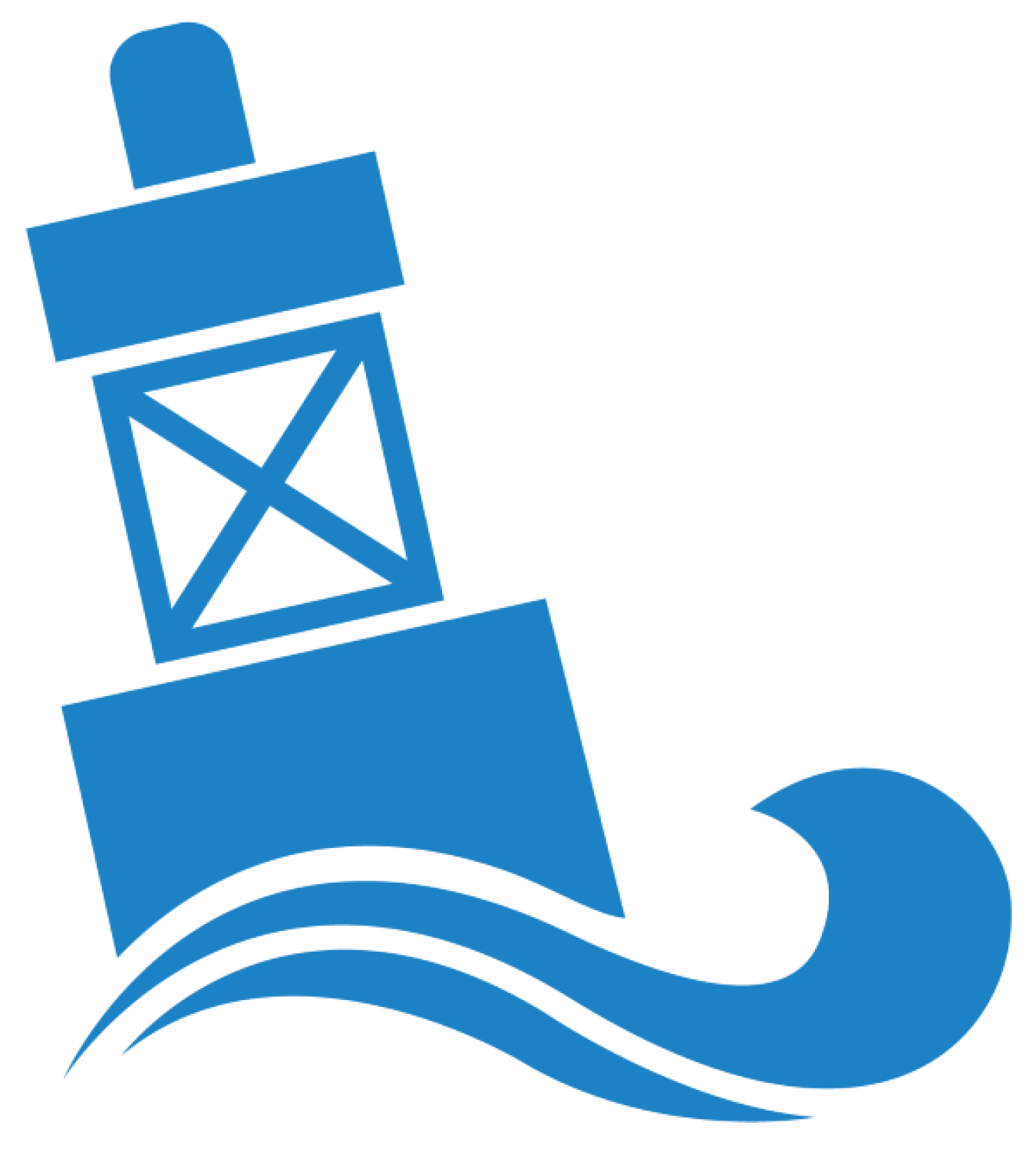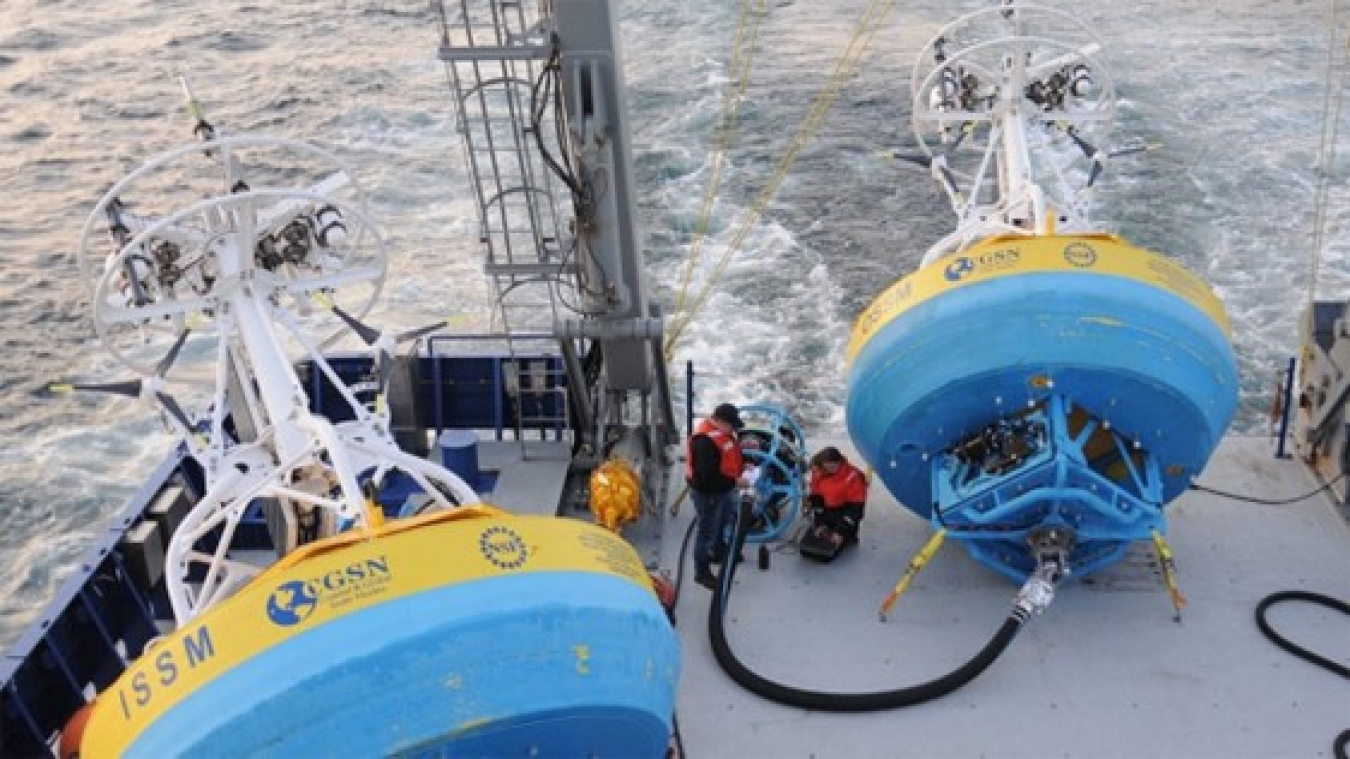Sandia National Laboratories identified innovative wave energy converter concepts that could power sensors on an ocean observing buoy.
Water Power Technologies Office
March 14, 2024
Marine Energy Program
Technology-Specific System Design and Validation
Project Name: Coastal Pioneer Array
Project Team: Sandia National Laboratories (lead), East Carolina University, Evergreen Innovations, Johns Hopkins University, Monterey Bay Aquarium Institute, National Renewable Energy Laboratory, Woods Hole Oceanographic Institution, and the National Science Foundation’s Ocean Observatories Initiative
Lead Recipient Location: Albuquerque, New Mexico

Sandia National Laboratories, in partnership with Woods Hole Oceanographic Institution, is working to develop a wave energy converter (WEC) that can support the Coastal Pioneer Array, one of five arrays that make up the U.S. National Science Foundation's (NSF's) Ocean Observatories Initiative. This NSF-funded major research facility collects open-source data from more than 900 instruments to address questions about the ocean. After considering many WEC concepts, the project team arrived at three high-viability designs.
The WEC will serve the Coastal Surfacing Mooring (CSM) system, which currently relies on solar, wind, and battery systems to power multiple sensors on the buoy itself and along the mooring line. These existing energy resources meet the system's full power demand about 70% of the time. To satisfy the full power demand 100% of the time and prevent interruptions to data streams, Sandia has been investigating designs for WECs that could provide additional electrical power to the CSM.

Engineers prepare two Ocean Observatories Initiative Coastal Surface Moorings for deployment, connecting the electromechanical chain (black cable extending from the buoy base) to the near-surface instrument frame.
In Fiscal Year 2023, Sandia performed a detailed assessment of existing CSM dynamics and power sources to understand how a WEC could potentially alleviate "brownouts" that occur when other power sources cannot produce the total amount of energy required for the mooring system's sensors to operate. By understanding the current system's dynamics and power capabilities (informed by data from the array's deployment on the New England Shelf), researchers were able to develop design requirements for a future WEC that will be integrated with the CSM. The team determined that the design must:
- Generate 10–100 watts of power.
- Avoid catastrophic failures that could compromise the system's mission to obtain scientific measurements.
- Enter safe mode during tumultuous activity (such as deployment, recovery, and extreme weather events) to prevent damage to the system.
- Not affect scientific measurements.
- Minimize changes to operational requirements, such as deployment, recovery, and maintenance of the mooring system.
With these design requirements in mind, the Sandia team explored several WEC options and ultimately selected three potential concepts for further investigation that best meet those requirements.

Researchers at Sandia began prototype bench testing of the most promising WEC concept, called a pitch resonator.
Researchers then assessed the three WEC concepts, detailing how each option addresses design requirements, like power generation and implementation of a safe mode. They also considered operational challenges for each concept, such as impacts while deploying and recovering the system, as well as components that may conflict with the current CSM system design. Based on initial modeling and design, the Sandia team identified the top two most promising concepts.
Next, the team will select one concept, develop a detailed design, assemble a prototype, perform testing, and deploy a wave-energy-equipped CSM system for at-sea testing.
This project is a collaboration between Sandia and Woods Hole Oceanographic Institution, along with Evergreen Innovations, Monterey Bay Aquarium Research Institute, East Carolina University, Johns Hopkins University, the National Renewable Energy Laboratory, and the Ocean Observatories Initiative. These partners bring expertise in robotics, hydrodynamics, dynamics and controls, marine operations, and wave energy to deliver a wave energy generation system for the Coastal Pioneer Array.
-
 Sandia National Laboratories identified innovative wave energy converter concepts that could power sensors on an ocean observing buoy.
Sandia National Laboratories identified innovative wave energy converter concepts that could power sensors on an ocean observing buoy. -
 NREL researchers identified optimal materials for harnessing ocean thermal gradients and generating electricity to power underwater vehicles.
NREL researchers identified optimal materials for harnessing ocean thermal gradients and generating electricity to power underwater vehicles. -
Researchers at the National Renewable Energy Laboratory expanded the capabilities of their open-source modeling tool to enable simulation of marine energy turbines to help optimize technology designs.
-
 The National Renewable Energy Laboratory and Pacific Northwest National Laboratory completed the first step in developing the Community Deployment Readiness Framework to support remote, coastal, and island community-driven energy transitions.
The National Renewable Energy Laboratory and Pacific Northwest National Laboratory completed the first step in developing the Community Deployment Readiness Framework to support remote, coastal, and island community-driven energy transitions. -
ORPC tests its new Modular RivGen Power System in Millinocket, Maine. Future applications may include power for electric vehicle charging stations, critical infrastructure, and communities.
-
 Triton Systems Inc. successfully tested its wave energy converter in hurricane-level waves, proving the durability of its prototype and demonstrating that marine energy can reliably power data collection and ocean exploration activities.
Triton Systems Inc. successfully tested its wave energy converter in hurricane-level waves, proving the durability of its prototype and demonstrating that marine energy can reliably power data collection and ocean exploration activities.
WPTO's marine energy e-newsletter shares news and updates on tools, analysis, and emerging technologies to advance marine energy.
The WPTO e-newsletter brings funding opportunities, events, publications, & hydropower and marine energy updates directly to your inbox.

